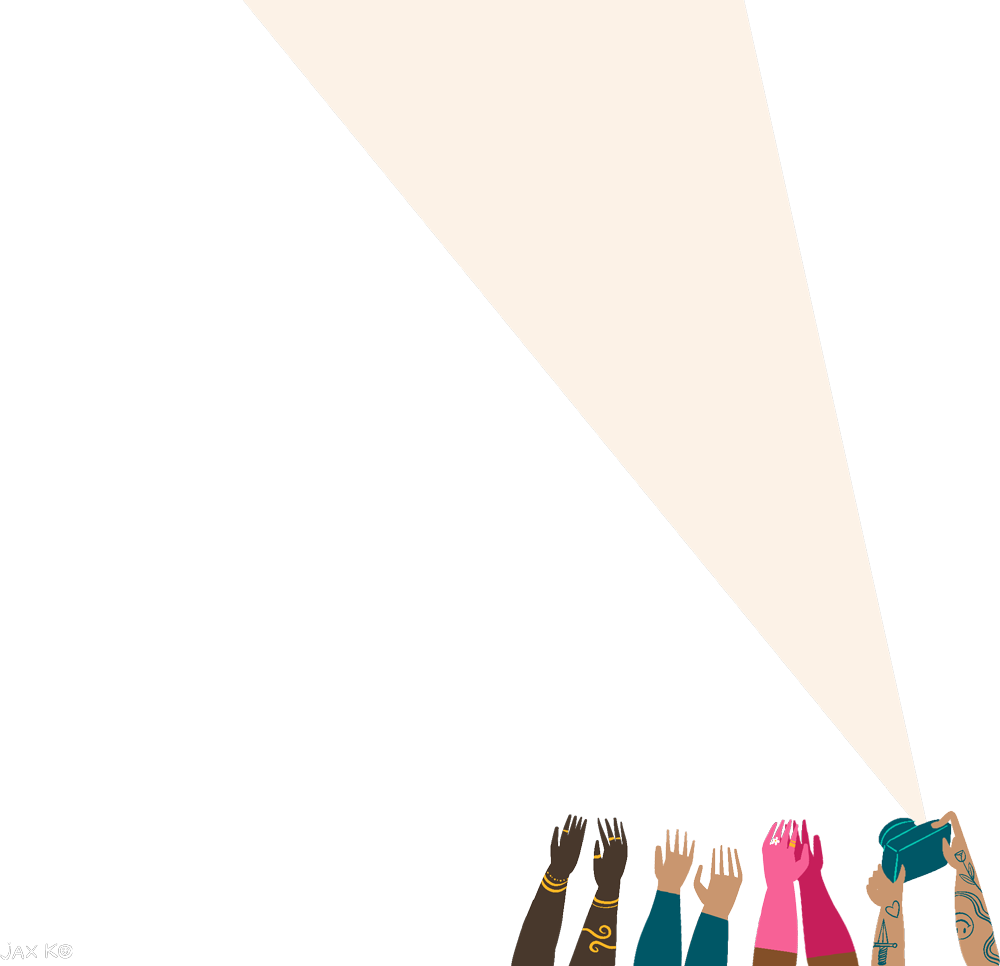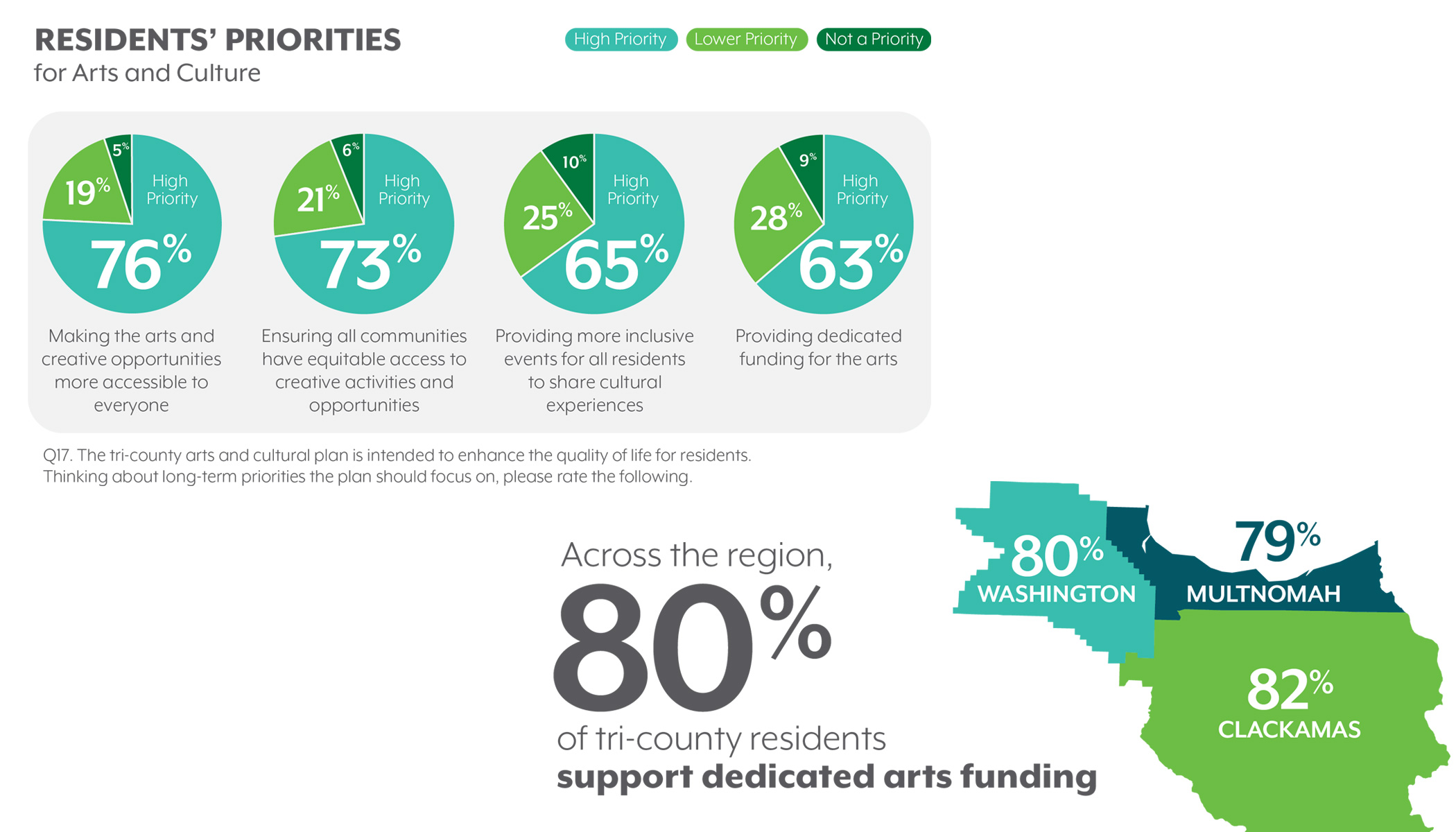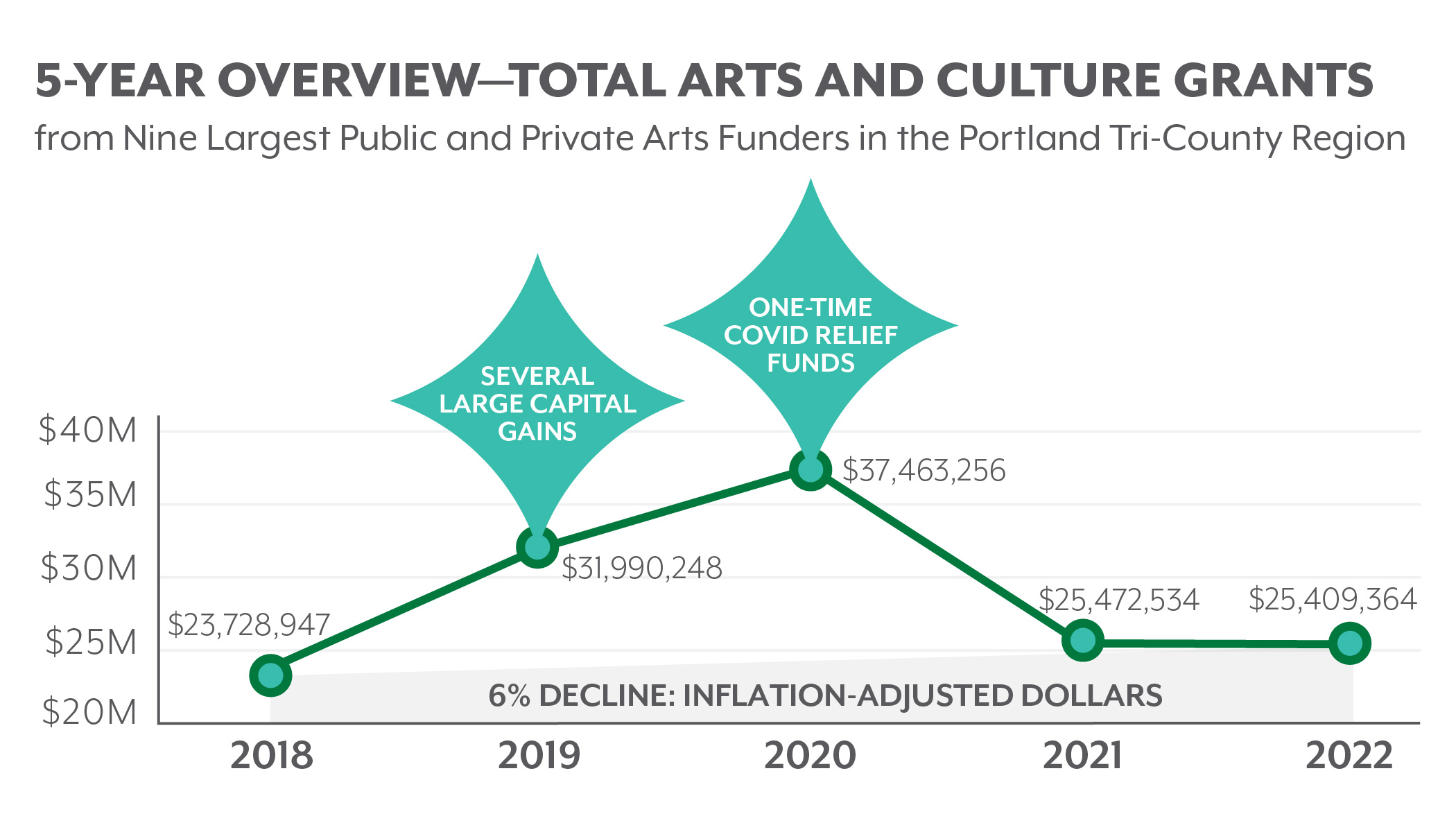


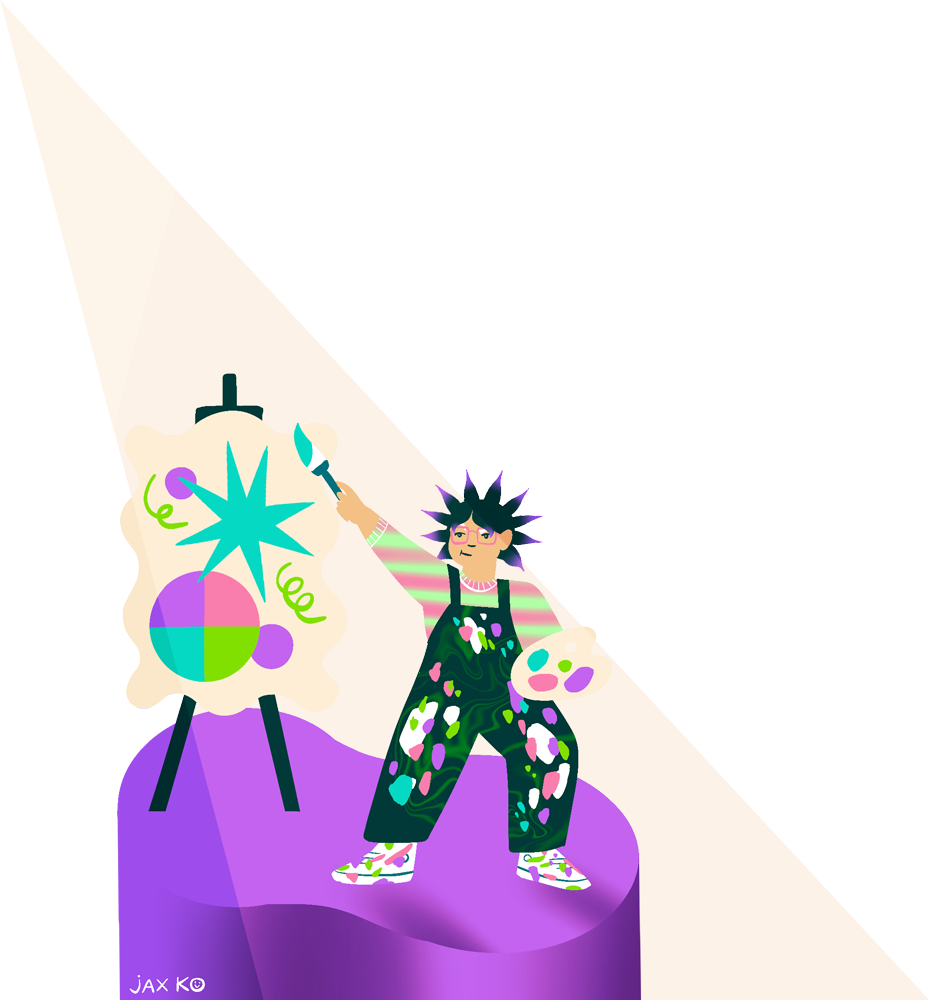

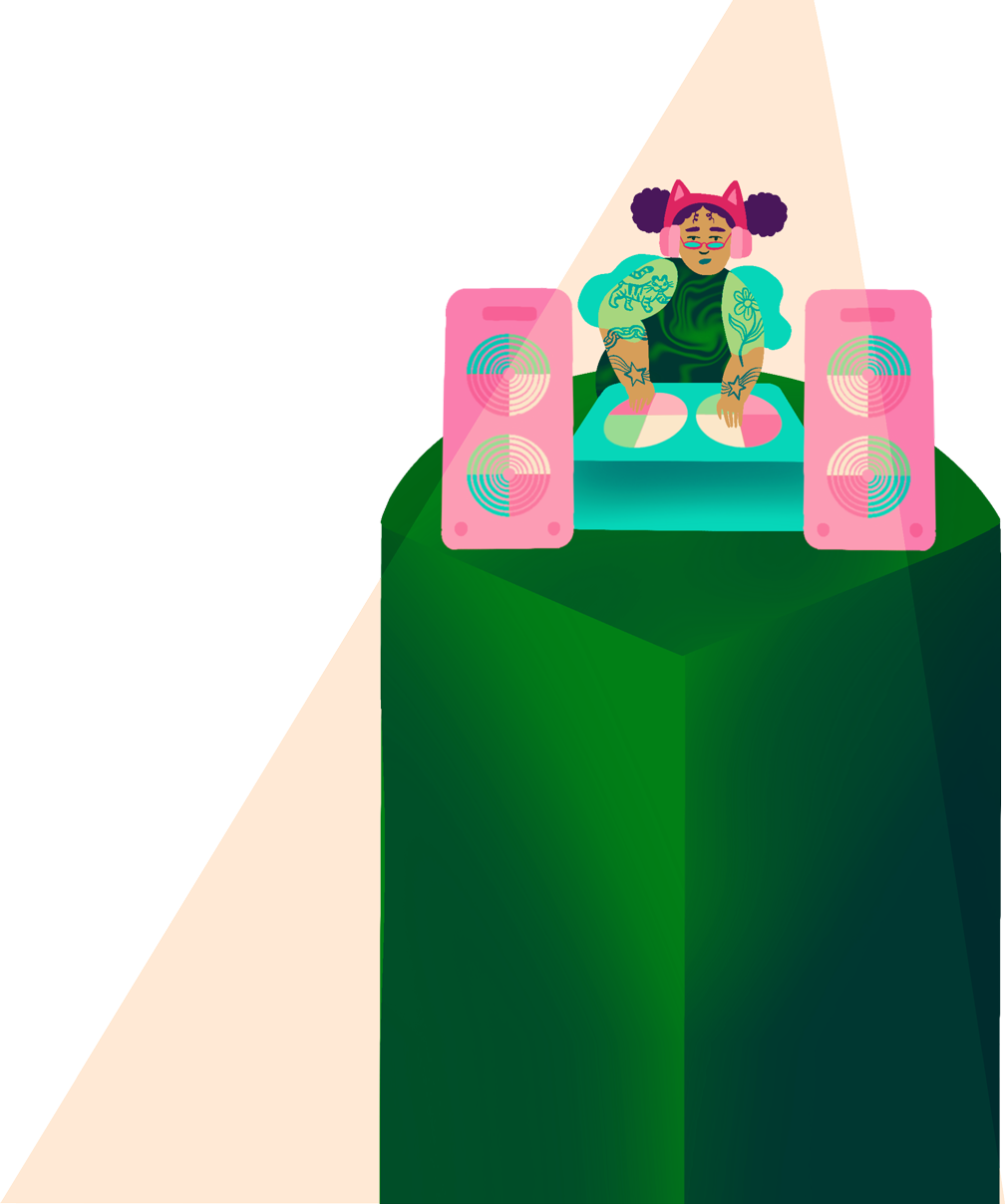
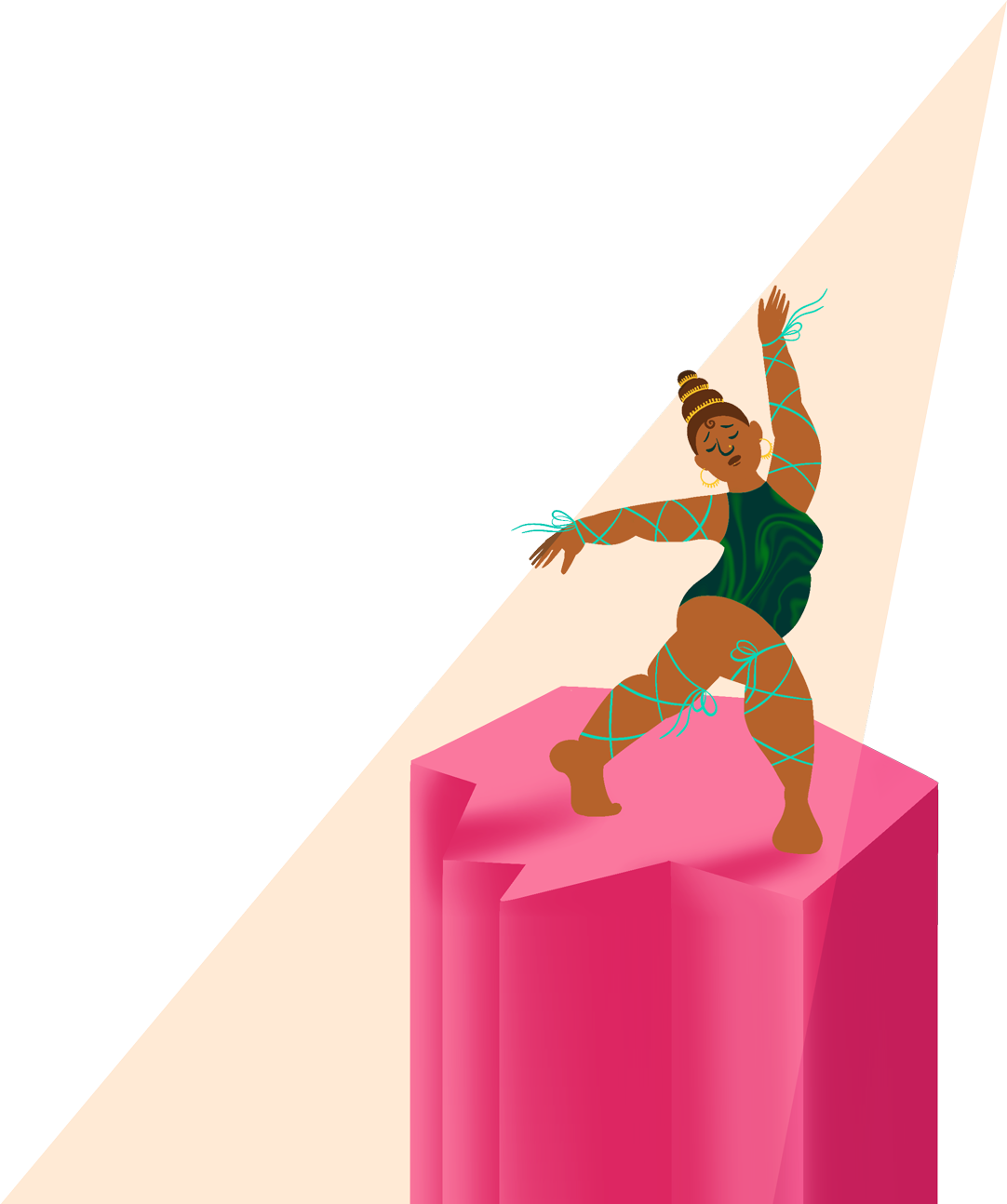
Illustration | Jax Ko
About Our Creative Future
Our Creative Future is a regional framework to advance arts and culture throughout the tri-county Portland area. There are seven local governments currently participating and creating action plans based on the regional framework. Other cities, towns, communities, and individuals are invited to use the framework as a resource.
Our Creative Future is a community-led arts and cultural vision for our region’s future.
The expression of arts and culture around us is vital to what makes our region great. It gathers us as a community, gives us a new perspective on our neighbors, and helps heal and address our region’s most critical issues. What was true in 2009 when the last regional plan was created is even more evident 15 years later. The arts are an integral part of our everyday lives.
This plan, Our Creative Future, is a regional framework that is positioned to realize the community’s shared vision, and that every community may use to advance arts and culture for their residents.
From the murals that rose up during the social justice movement to the poetry and essays that were written to preserve this moment in history, we turned to art as an expression of beauty and pain. As our community navigated loneliness and isolation throughout the pandemic, the festivals and performances in our outdoor spaces brought us together safely. We are now turning to cultural events and creative businesses to revitalize our post-pandemic economy, and we are investing in arts-based programs to help individuals heal from the traumas of racism and homelessness.
All community members rely on our arts and culture system in big and small ways to make our home a joyful, vibrant, and resilient place to live.
Our region’s leaders partnered with community members to answer a central question: “What do we want our future cultural life to look like for the people who live here?”
During the planning process, the steering committee served as the community voice. Together, we reached over 3,500 people across 50 listening sessions, 40+ interviews, and two regional surveys. We spoke with artists of all disciplines, culture bearers, creatives, arts and cultural nonprofits, creative businesses, donors, audience members, aspiring professionals, students, amateurs, and others who enjoy arts and culture in all forms.
What we heard was clear. Arts and culture are fundamental to the livability and health of each community. We see the work of artists, creatives, culture bearers, and cultural nonprofits as:
- Essential to the region’s economic vitality
- Critical to promoting a sense of well-being and belonging
- Assisting with our most pressing community issues, such as homelessness, urban vitality, mental health, transportation, affordable housing, public safety, and more
It is clear artists and cultural nonprofits make a tangible difference in people’s lives while supporting government priorities. The arts and cultural community are part of the solution to create impact!
The community-based steering committee reviewed the connections and conversations and created a shared vision for arts and culture:
A tri-county region where every resident can access relevant and dynamic arts, culture, and creative experiences as an essential part of our lives.
The foundation of that vision is a healthy arts and cultural community supported by our governments, community leaders, artists, creatives, culture bearers, and each of you.
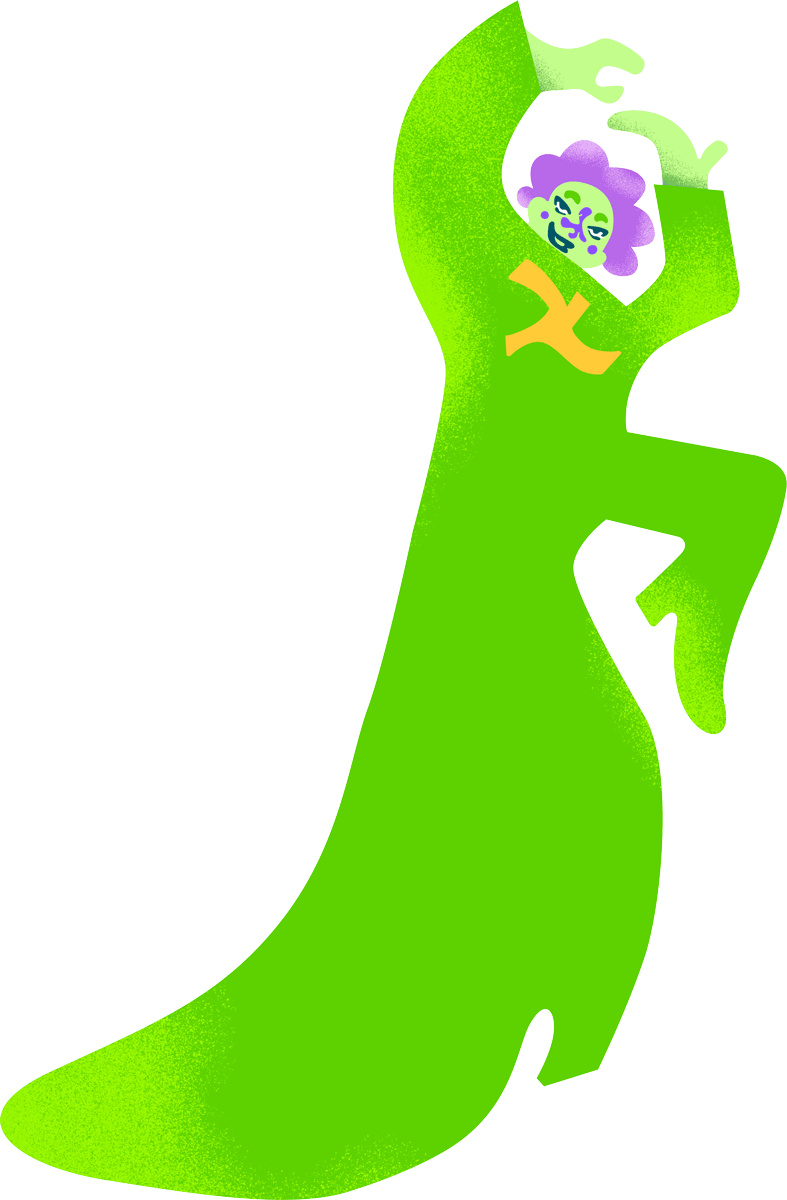
Goals and Strategies
We are working with community and government partners to fully resource this plan and advance the community’s vision. As part of this work, the steering committee created a set of shared goals with strategies to be tailored to each jurisdiction. Our goals are to:
1. Build an Inclusive Arts and Cultural Community
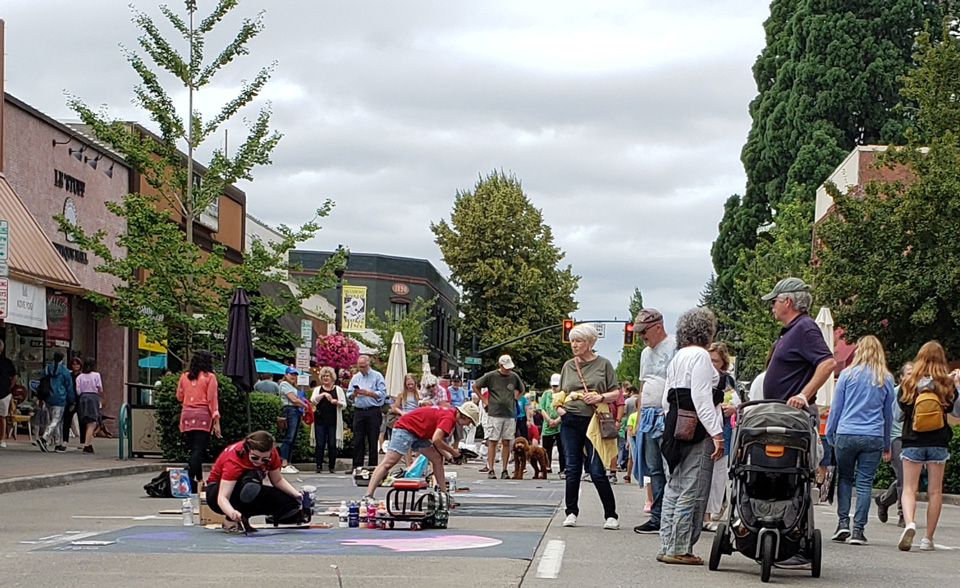
All communities and people are valued members of the region’s arts and culture community and share in its cultural richness. BIPOC, immigrants, LGBTQIA+, people with disabilities, and people in every town and every city across the three counties, are supported as contributors to our collective regional culture.
Strategies
- Provide funding and other resources for the arts and culture of people who are BIPOC, immigrants, LGBTQIA+, people with disabilities, the unhoused, neurodiverse, seniors, opportunity youth (young people aged 16-24 who are disconnected from education and work), and their community-based organizations.
- Provide increased support for programs in libraries, parks, and other community settings for underrecognized populations and communities.
- Provide support services for cities throughout the region to develop their local arts and culture.
- Provide support services for programs, artists, groups, and venues in smaller cities and unincorporated areas throughout the counties.
- Address barriers to facility and space use, such as fees, transportation, parking, and availability of food. See also 3.3, affordable space program, below.
- Create a racial and cultural equity fund for BIPOC organizations and other organizations serving underrecognized populations through arts and culture (e.g., houseless, opportunity youth, people with disabilities), creating a pathway to organizational growth and sustainability.
- Provide support and best practices for cities and counties to develop local arts agencies and cultural equity offices.
- Improve and fund accessibility to arts and culture programs, venues, and opportunities for people with disabilities in a comprehensive manner.
- Continue and expand support for K–12 arts education and creative youth development.
- Continue and expand support for public art programs in cities and counties in the region.
- Develop enhanced and inclusive leadership in the arts and culture community.
2. Forge Purposeful Connection and Coordination
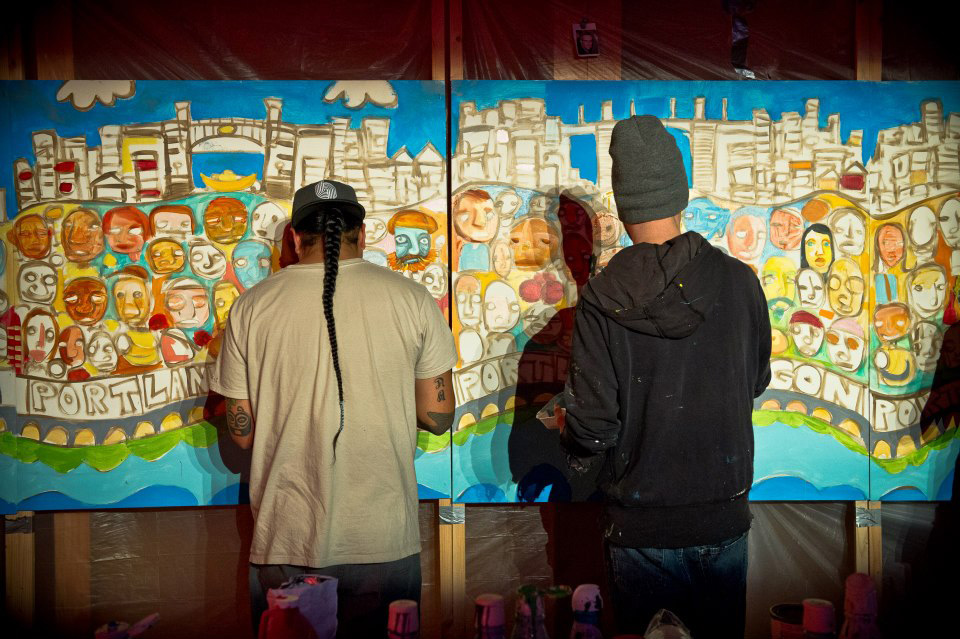
Arts and cultural community members are well-connected and working together as appropriate. They also recognize and express their interconnections, as both independent and interdependent (relying on one another) pieces of a regional arts and cultural community.
Strategies
- View the arts and cultural community as inclusive and mutually supportive, with intentional efforts to include artists, culture bearers, artisans, nonprofits, commercial arts, and others.
- Broaden the efforts of funding, support services, and advocacy to include individual creatives and small businesses working in the commercial or quasi-commercial arts.
- Advocate for effective public policy and action in support of the work of the arts and cultural community.
- Build comprehensive public awareness and understanding of arts and culture in the region.
- Develop a network of local arts agencies (e.g., Portland’s City Arts Program, county arts programs, city arts programs, county Cultural Coalitions, RACC) to replace the Intergovernmental Agreement and strengthen regional arts leadership.
- Promote information and resource sharing and networking within the arts and culture community.
3. Empower the Arts and Cultural Community with Resources
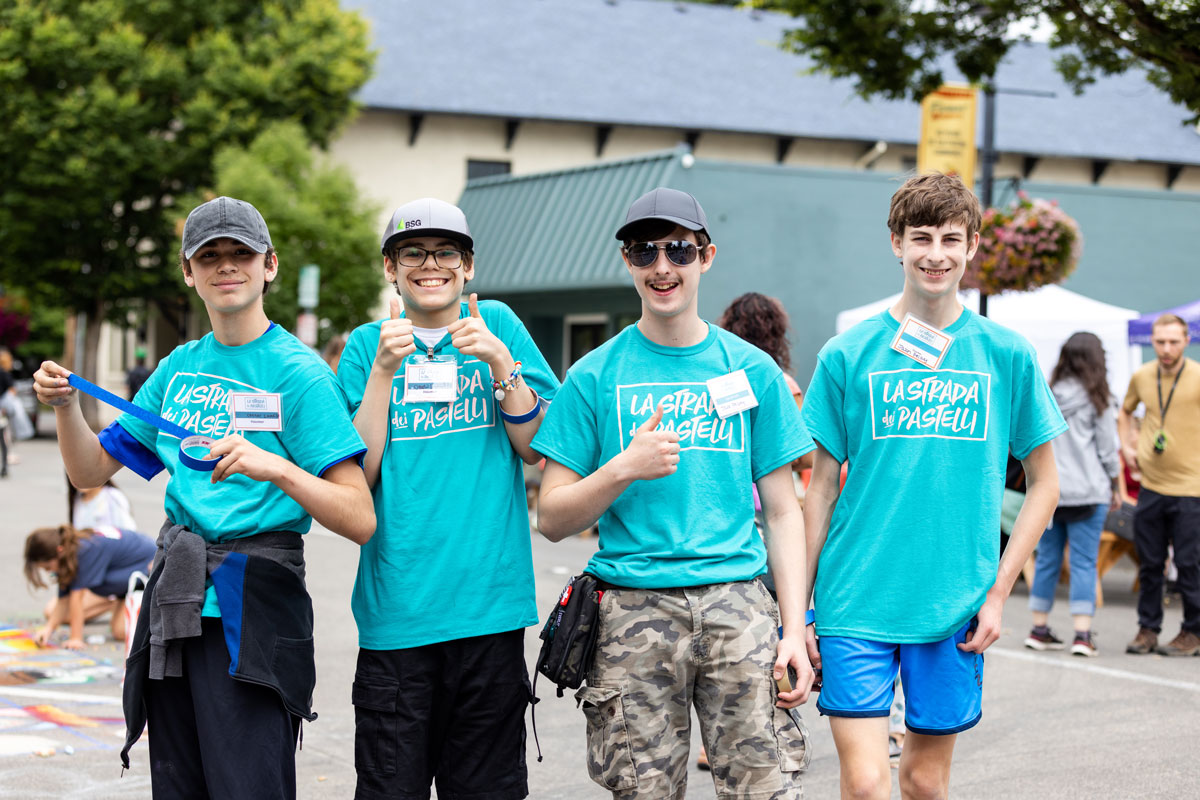
The arts and cultural community is robustly supported through significantly increased levels of funding, affordable space, arts-friendly policies, and more, sufficient to enable the full power of arts and culture in communities throughout the region.
Strategies
- Significantly increase funding across the region for nonprofit organizations, individual artists/creatives, and small commercial arts enterprises. This can include updating the Portland Arts Education and Access Fund, creating a regional Metro revenue source, creating new local county and city tax initiatives, and/or increased county/city allocations. Prioritize funding for artists and arts and cultural organizations and programs.
- Provide support services for artists and their networks, such as funding, networking, professional development/training, and mentoring.
- Develop a comprehensive affordable space program, including elements such as a directory, rent subsidy, facilitation of space projects, technical assistance, matching capital grants, identification of opportunities, and support for increased accessibility. Identify opportunities to use empty commercial spaces.
- Align arts funding policies with best practices in equity and accessibility.
- Convene an active cohort of foundation arts funders and corporate arts funders to encourage increased support and collaboration.
- Explore rebuilding the existing United Arts Fund (an annual United Way-style fundraising campaign), reinvigorating the workplace giving program and providing recognition and support for individual donors. Restore corporate and foundation support for the fund.
- Acknowledge and support the strategic role of service organizations in achieving the goals of this plan, such as MusicPortland, Oregon Media Production Association (OMPA), Portland Events and Film Office, Arts Concierge, etc.
- Promote creativity and the arts through a communitywide marketing and audience development program.
- Develop a systemic solution to sustainability of Portland’5 Centers for the Arts and its users.
4. Drive Economic Growth through Arts and Culture
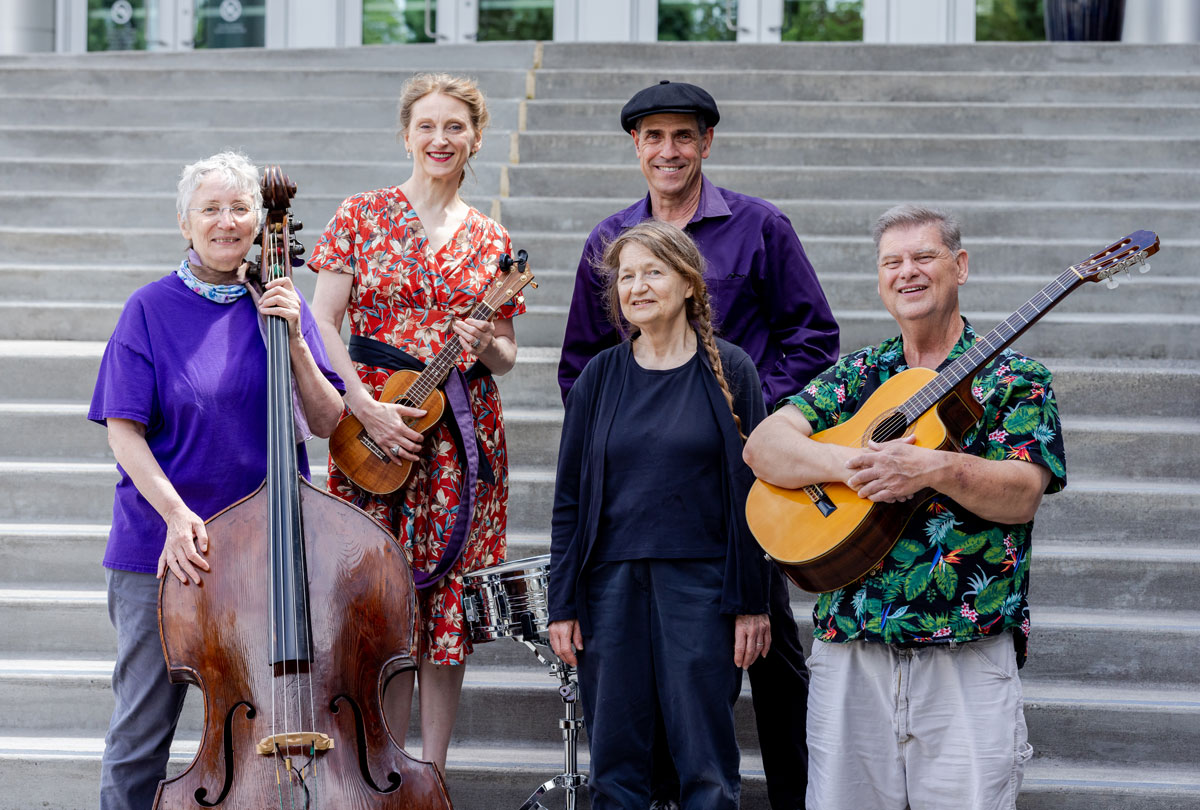
The arts and cultural community amplifies its role as a force for economic prosperity, job growth, entrepreneurship, revitalization, and quality of life for everyone.
Strategies
- Provide economic development supports for the commercial arts sector, such as music, film, media, fashion, and design. Consult and partner with service organizations to identify and provide high-priority supports.
- Build markets for commercial arts sectors. Consult and partner with service organizations to identify specific opportunities to build markets.
- Invest in arts and culture as a tool to revitalize downtown Portland, city centers, town centers, Main Streets, cultural districts, and corridors.
- Strengthen cooperation and coordination with tourism organizations to enhance cultural tourism.
- Integrate arts and culture into workforce development. Create pathways for employment in the arts and culture community.
- Expand documentation of economic impact and return on investment for arts and culture.
- Research and develop a creative economy strategic growth plan.
5. Utilize Arts and Culture in Community Health and Development
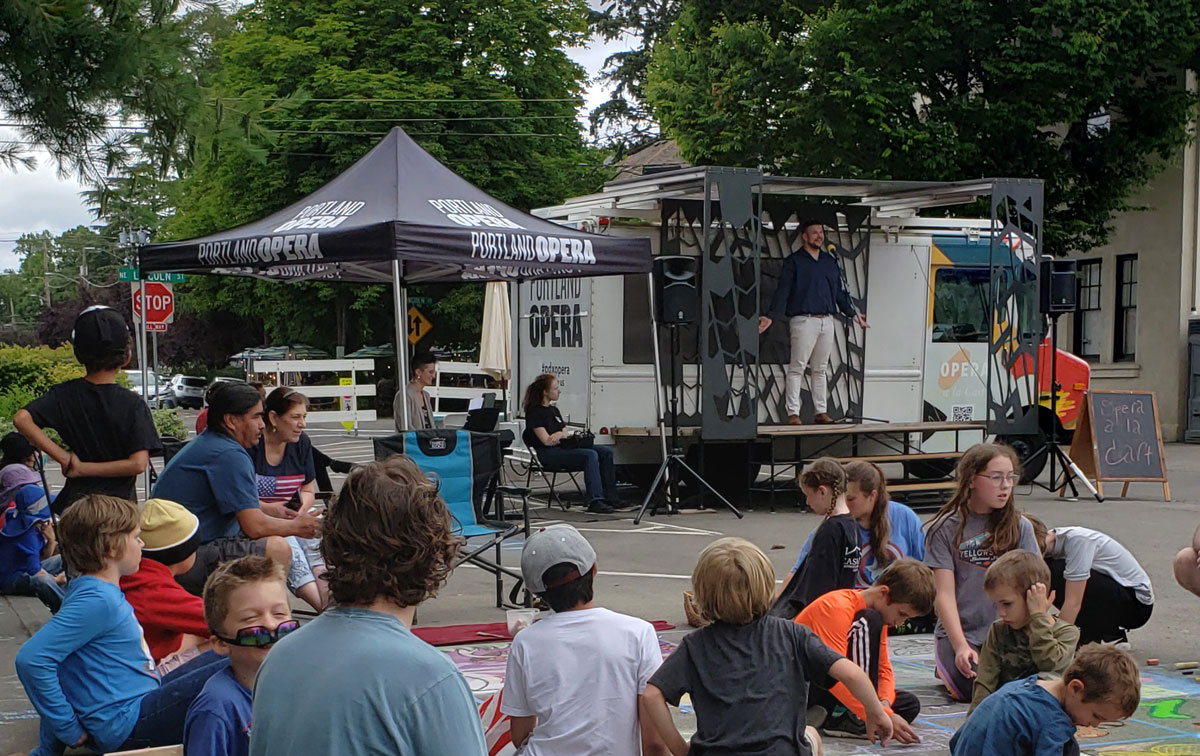
Arts and culture are recognized, valued, and supported as a partner in social services, health, healing, transportation, public safety, education, and other sectors.
Strategies
- Local governments invest in arts and culture as a tool of their social service missions and other functions, such as health, transportation, housing, community engagement, public safety, etc. Consider arts and culture as part of solutions. Build on best practices of successful programs in other places.
- Develop metrics and evaluations to demonstrate success in using arts and culture in municipal functions and to improve those efforts.
- Develop programs celebrating and supporting inclusive, amateur, community-based creativity throughout the region.
- Explore and develop policies to require or incentivize public art within private real estate development. See 1.3 above. Build on the successful experience of public art programs in the region.
These goals and strategies will help us meet the needs of our local communities while providing powerful ways for us to partner as a region.
This work is a call to action for our local governments, community leaders, and the arts and cultural community to continue to work together to build a sustainable, vibrant future. Our Creative Future awaits!
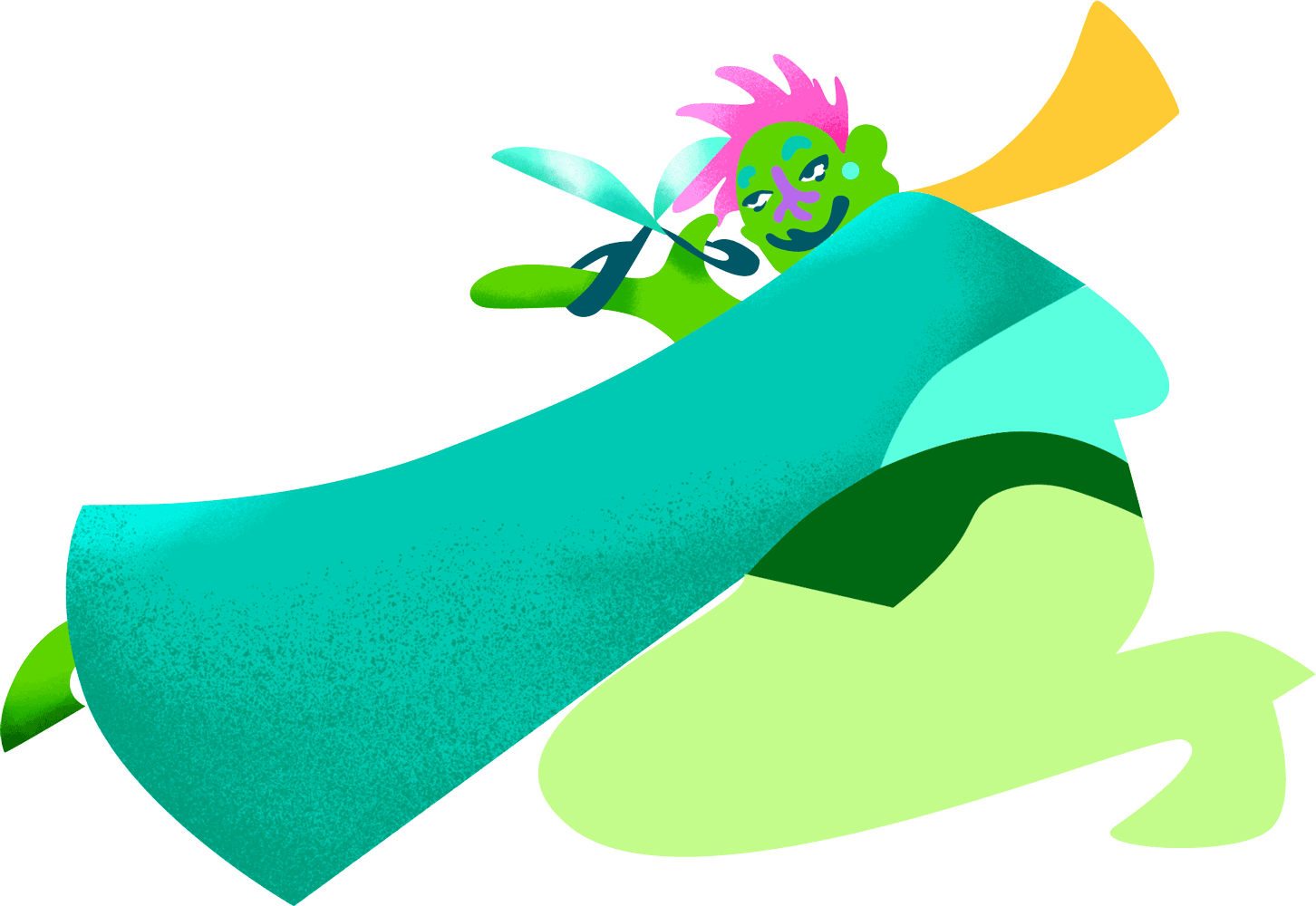
Opportunities for Action
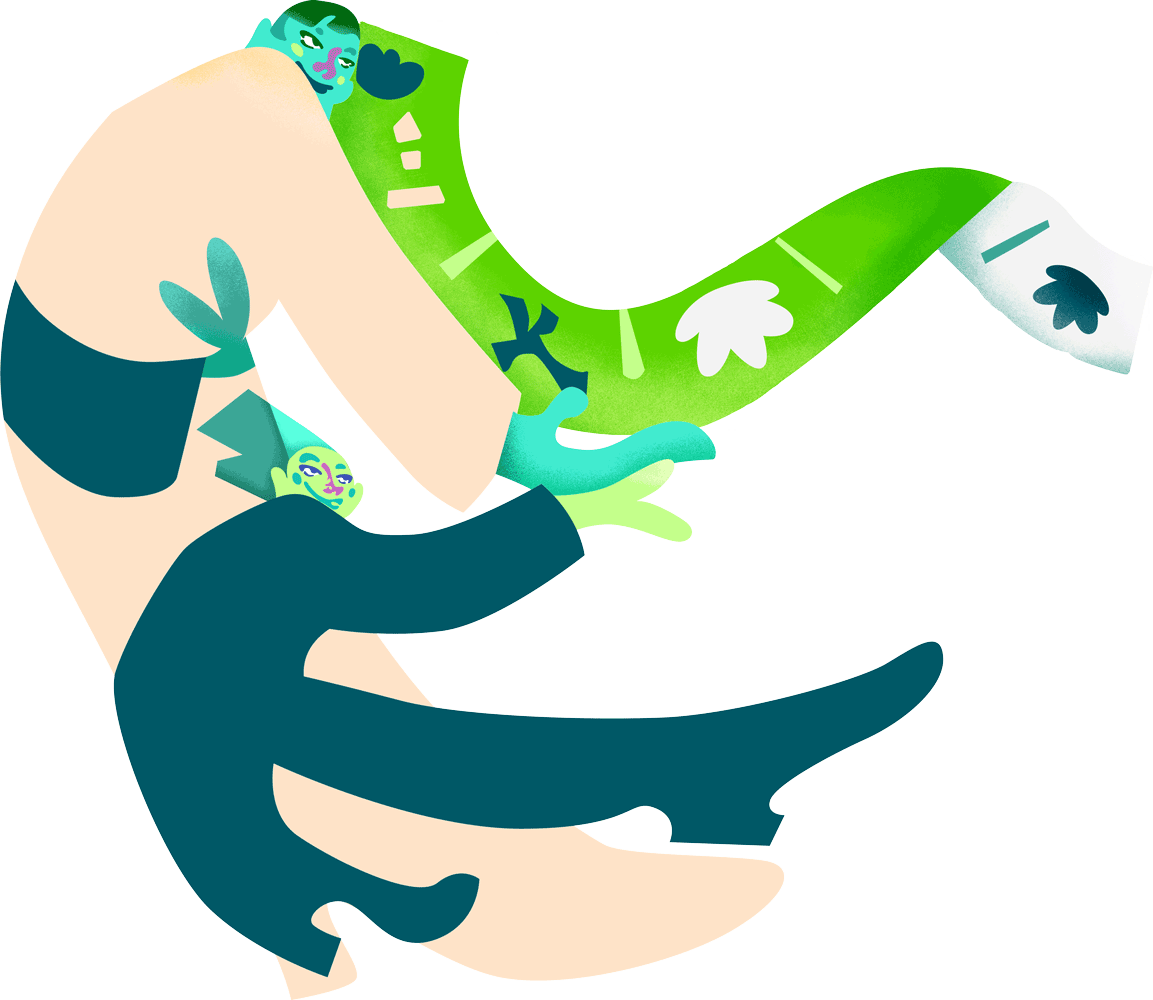
Advocate
• Participate in and support advocacy for implementation of the recommendations of this plan.
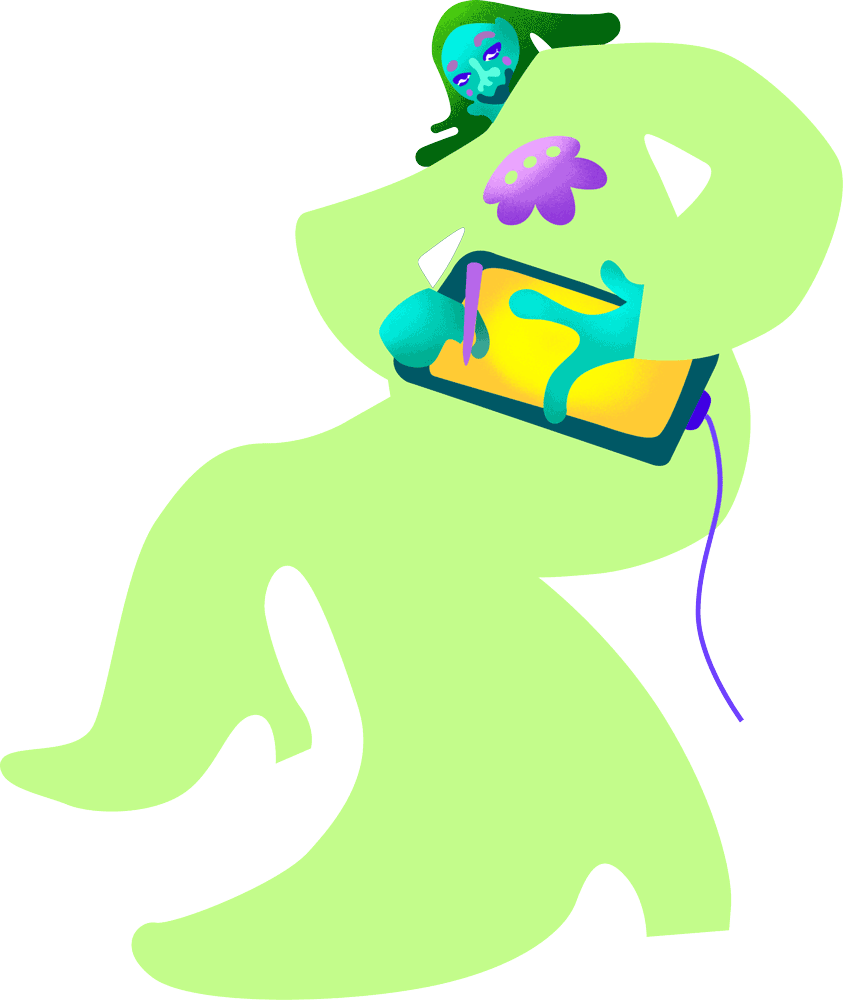
Participate
• Attend community convenings and stay connected.

Lead
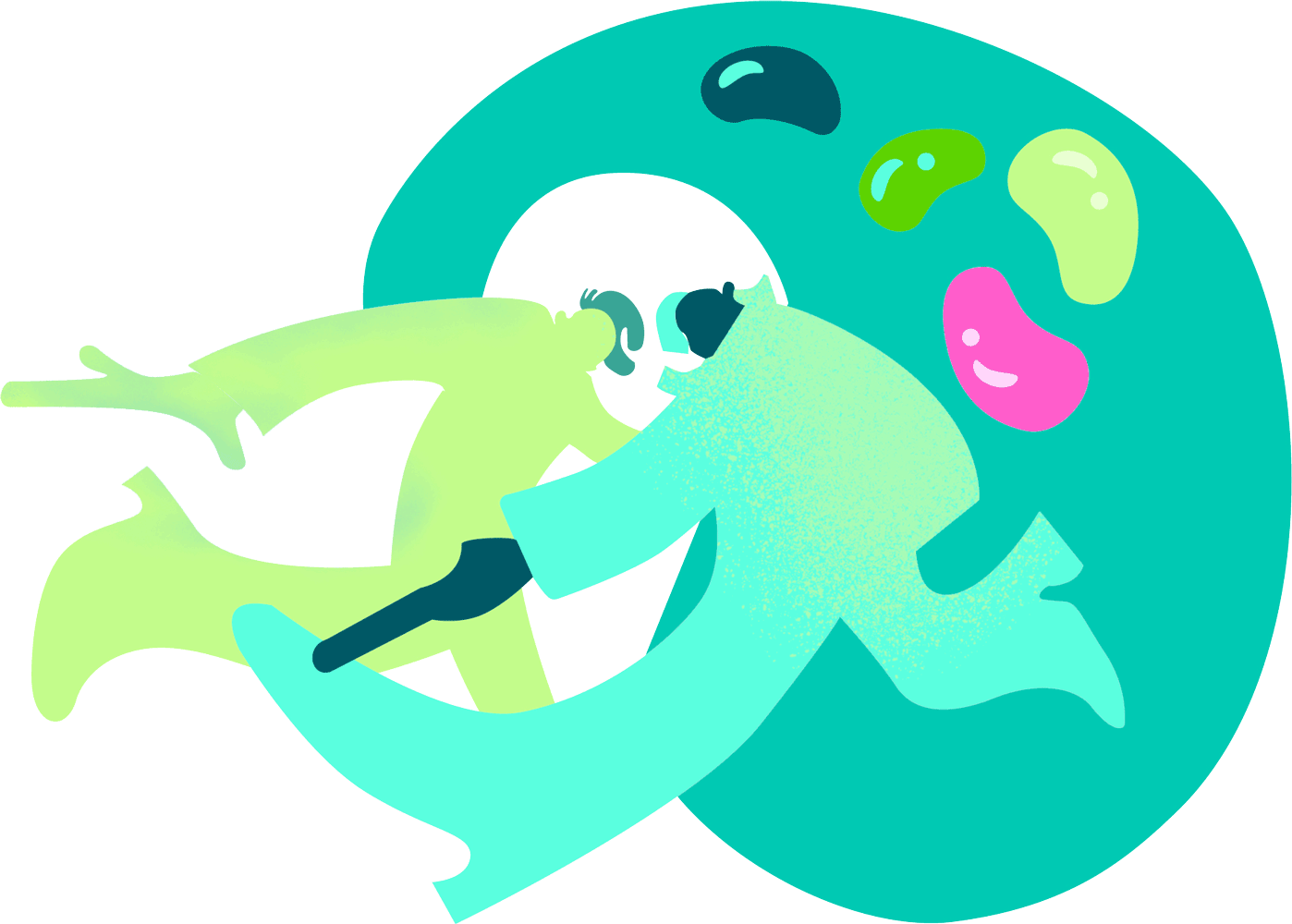
Opportunities for Cities and Towns
• Reach out to the network of local arts agencies for information and assistance. Consider joining that network.
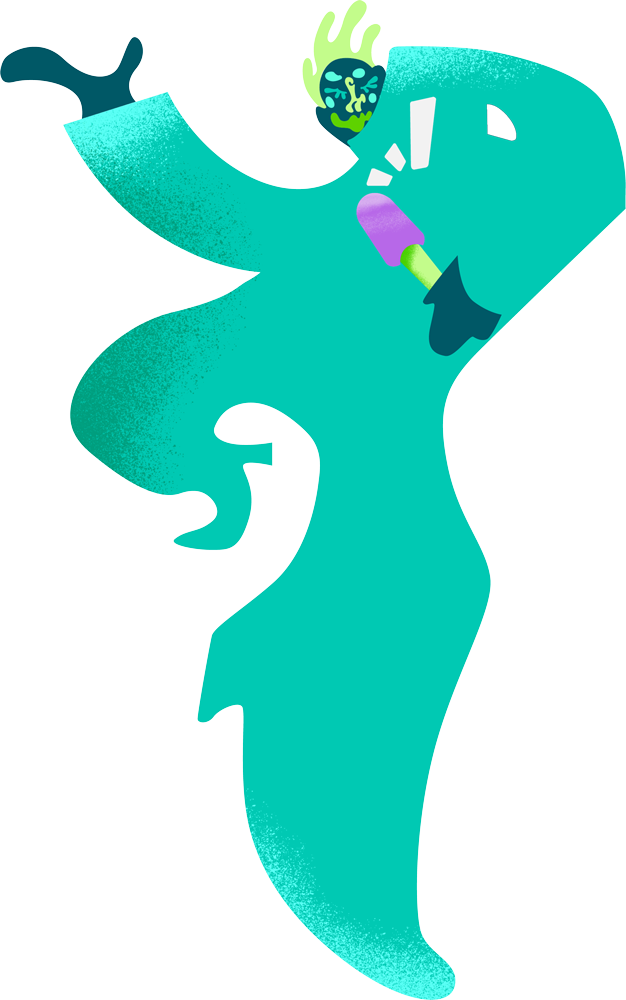

Coming Soon
- City of Portland Action Plan
- Multnomah County Action Plan
- Metro Action Plan
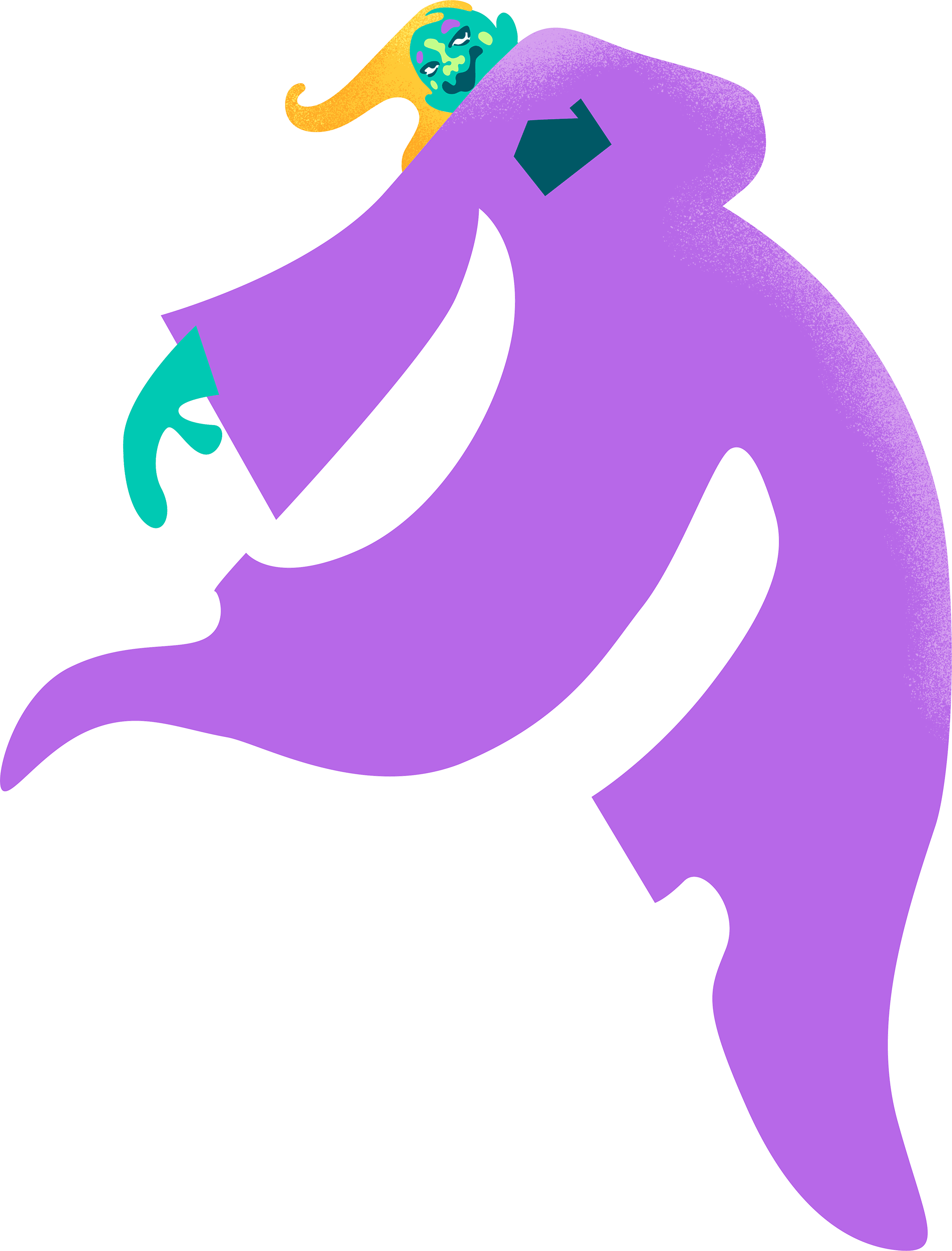
Research and Planning
What we learned
Note: all survey figures cited are from the statistically valid survey.
The study is based on a five-year (FY2018 through FY22) analysis of grants to arts and cultural organizations and individual artists in Portland’s tri-county region: Multnomah, Clackamas and Washington Counties. Grantmakers were selected as the largest arts funders in the region, including public agencies, private foundations and a community foundation.
Participating agencies and foundations providing grantmaking data:
- Regional Arts and Culture Council (RACC)[1]
- Oregon Arts Commission
- Oregon Cultural Trust
Private Funders
- James F. and Marion L.
- Miller Foundation
- M. J. Murdock Charitable Trust
- Meyer Memorial Trust
- Oregon Community Foundation
- The Collins Foundation
- The Marie Lamfrom Charitable Foundation
Plan Leadership
Meet the Team and Funders Who Led This Effort
Steering Committee

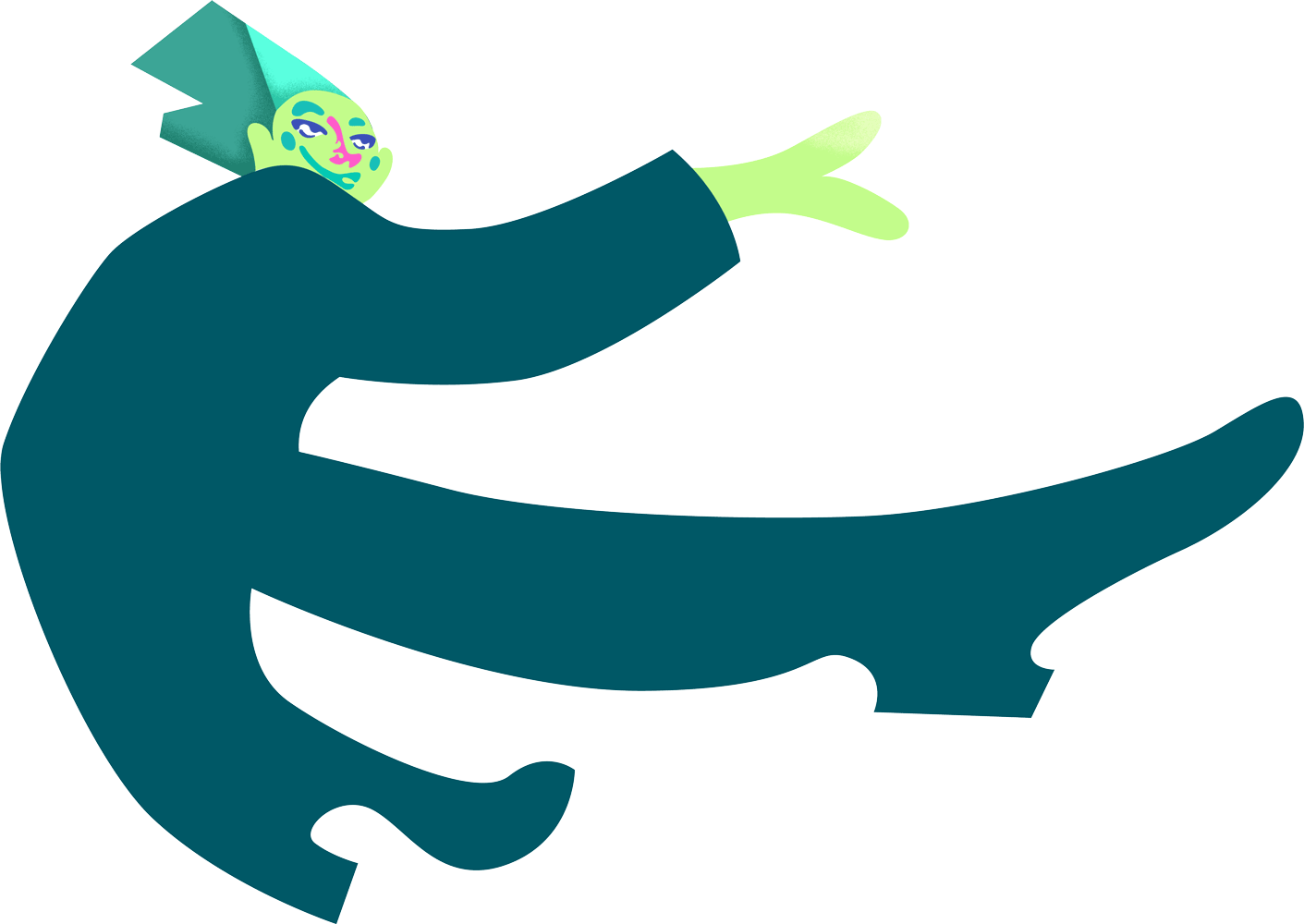
TRIESTE ANDREWS
Oregon City Arts Commission
NICOLE BRADIN
Washington County Visitors Association
JULIE BUNKER
Milestone Initiatives
JOE CANTRELL
Artist
GUS CASTANEDA
Aloft Hotel
CORINN DETORRES
Chapel Theatre
JERRY FOSTER
PassinArt
SUBASHINI GANESAN-FORBES
NEW Expressive Works
JOHN GOODWIN
Portland Art Museum
KIMBERLY HOWARD WADE
Caldera
Joaquin Lopez
Creative Laureate of Portland
Jaimie Lorenzini
Happy Valley Policy Analyst
Barbara Mason
Artist
JEREMY OKAI DAVIS
Artist
SUSHMITA PODDAR
Small business owner
SANKAR RAMAN
The Immigrant Story
BARBARA STEINFELD
Consultant
KARIS STOUDAMIRE-PHILLIPS
MERC Commission
TONI TABORA ROBERTS
Consultant
TONISHA TOLER
Collins Foundation
TAMMY JO WILSON
Art in Oregon
Committee members were nominated by officials from participating jurisdictions, including Clackamas, Multnomah and Washington counties; the cities of Beaverton, Hillsboro and Portland; the Metro regional government; and the Regional Arts & Culture Council (RACC). They represent diverse backgrounds, races, ethnicities, cultural practices, and ways of knowing (e.g., disability; Black, Indigenous, Latinx, Asian, Pacific, Islander and People of Color; LGBTQIA+ identities; and veteran communities). They also represent multiple sectors of the community, including arts, culture, creative economy, education, business, social justice, “unlikely allies,” and others.
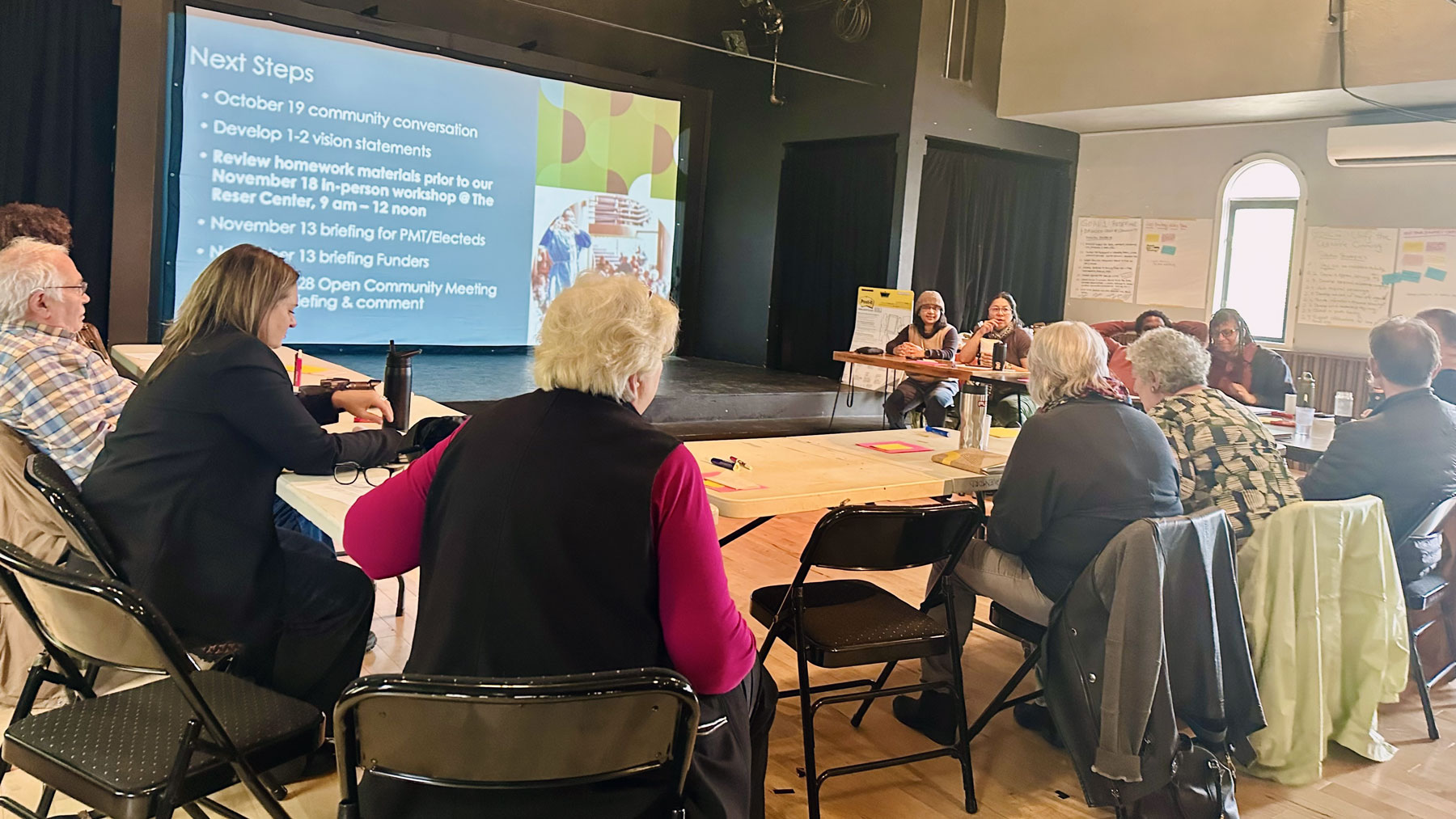
Photo | Steering Committee Meeting at Chapel Theater, Oct 2023
Nominators sought to bring together a mix of personas, including individuals who lead with empathy, sensitivity, curiosity, and purpose, with a geographic mix of members reflecting all planning areas. Steering Committee members were asked to consider the community’s interests above individual or parochial interests, and agreed to serve as ambassadors, advocates, and as thought leaders representing the breadth and depth of the metro region.
The Steering Committee developed a regional vision for arts and culture and brought recommendations to the Portland City Council and other jurisdictions in the region. They helped identify individuals and groups who offered fresh ideas and insight to harness emerging opportunities and overcome long-standing challenges. The steering committee also advised the staff team throughout the planning process, and ultimately co-created the vision, goals, and strategies of the plan..
Photo | Lin Lucas, The Right Brain Initiative
Consulting Team and Engagement Partners
- David Plettner-Saunders, Cultural Planning Group
- Linda Flynn, Cultural Planning Group
- Marlena Reese McKnight Ed. D., Cultural Planning Group
- Eric Block, Metropolitan Group
- Martin Cohen, Cultural Planning Group
- Nicole Adams, Metropolitan Group
- LaShawn McCarthy Jr., Metropolitan Group
- Kathleen Holt, Holt Strategies
- Michael Alexander, Ret. President & CEO, Urban League of Portland
- Sean Garrison, Metropolitan Group
- Kirsten Gunst, Metropolitan Group
- Ginelle Lazo-Perez, Metropolitan Group

Photo | Photo | Community Town Hall at Portland State University, April 2024
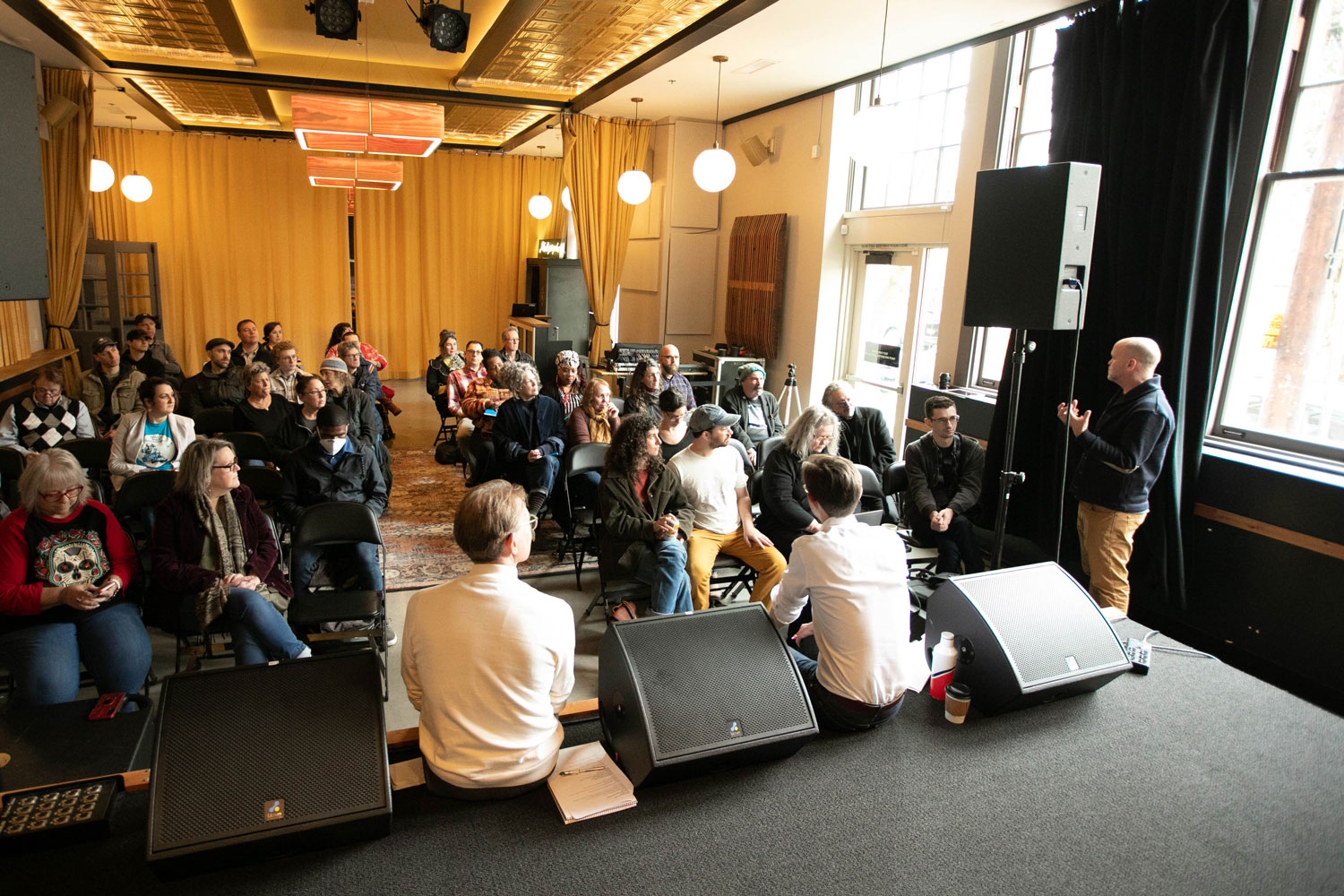
Photo | Music Portland at Revolution Hall
Project Management Team
The consultants’ work was overseen by a Project Management Team representing the participating jurisdictions, including Dianne Alves from the Clackamas County Arts Alliance, Laura Becker from the City of Beaverton, Jeff Hawthorne and Stephan Herrera from City of Portland, Michele McCall-Wallace from the City of Hillsboro, Mario Mesquita from the Regional Arts & Culture Council, Raziah Roushan from Tualatin Valley Creates/Washington County, Cristina Nieves from the Office of Multnomah County Commissioner Sharon Meieran, and Robyn Williams from Portland’5 Centers for the Arts/Metro.
Funders
This effort would not be possible without support from the following generous funders:
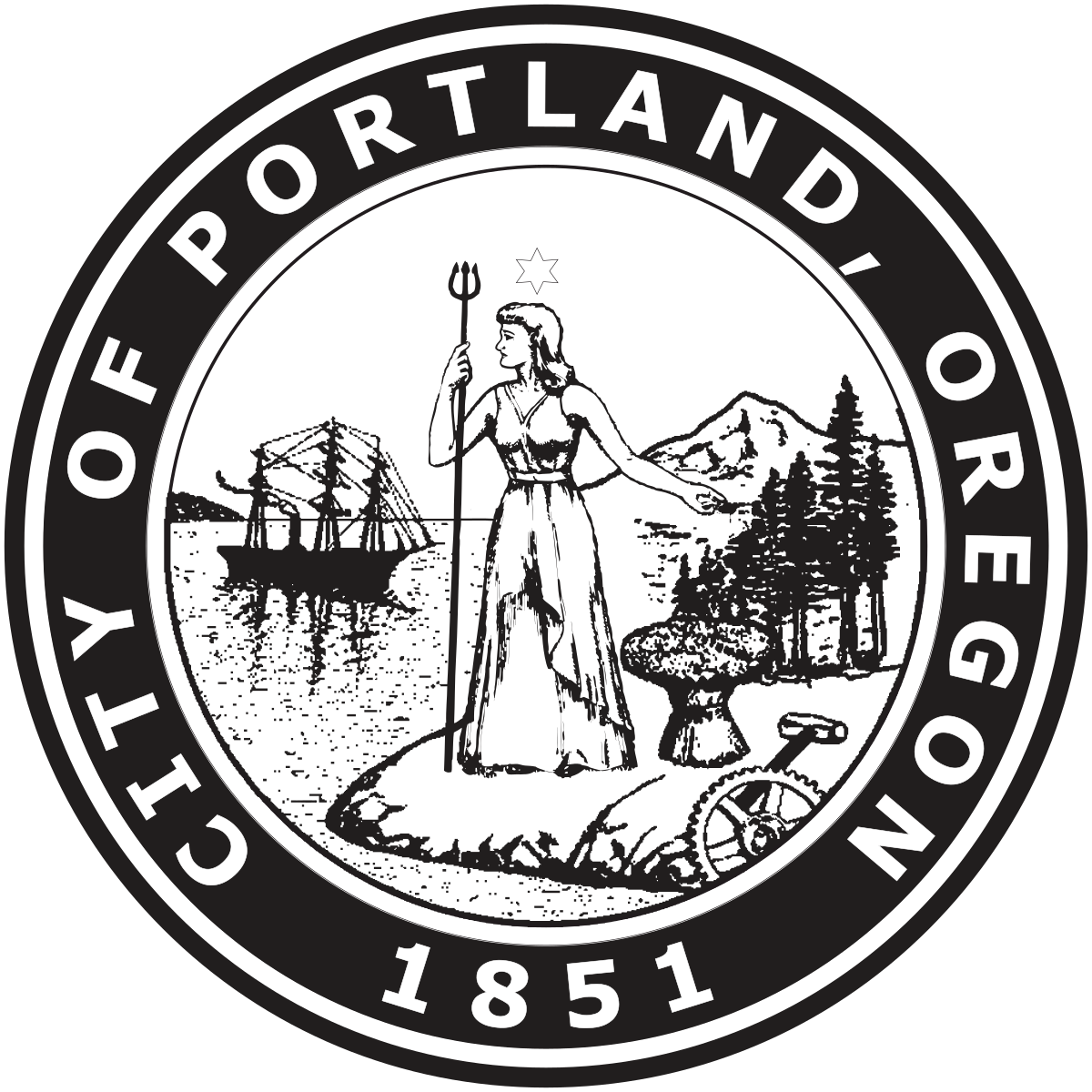


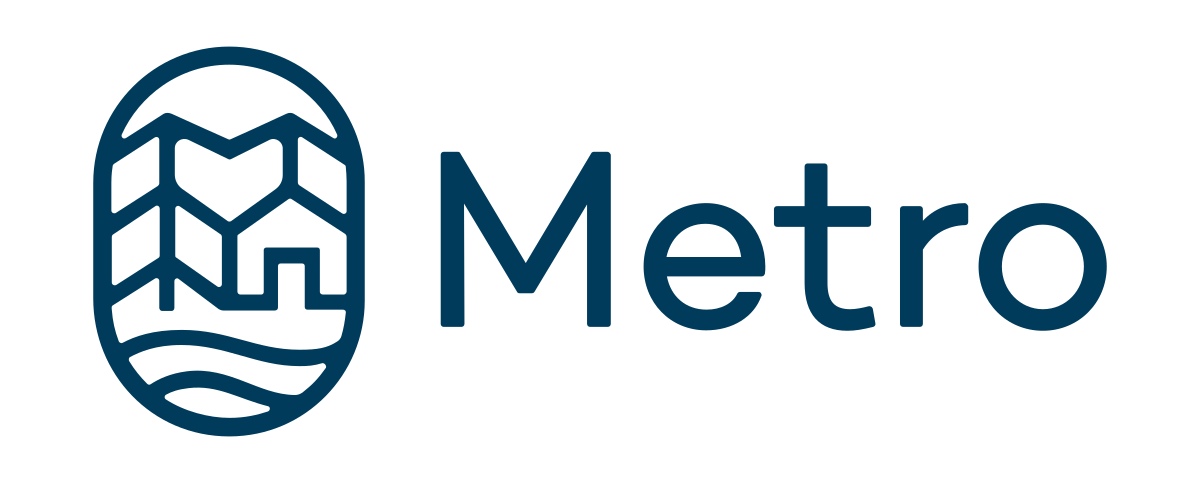

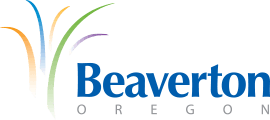

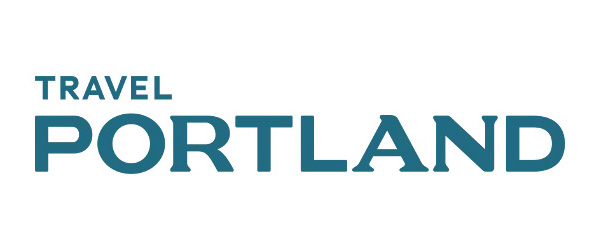
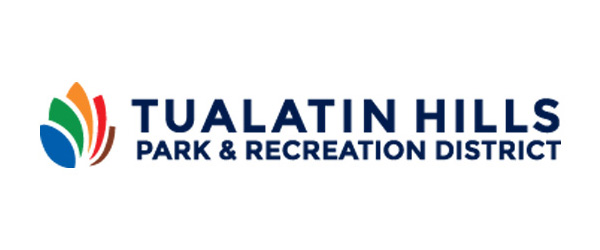
Contact us
Reach out with questions or ideas
Send us a message
We would love to hear from you!
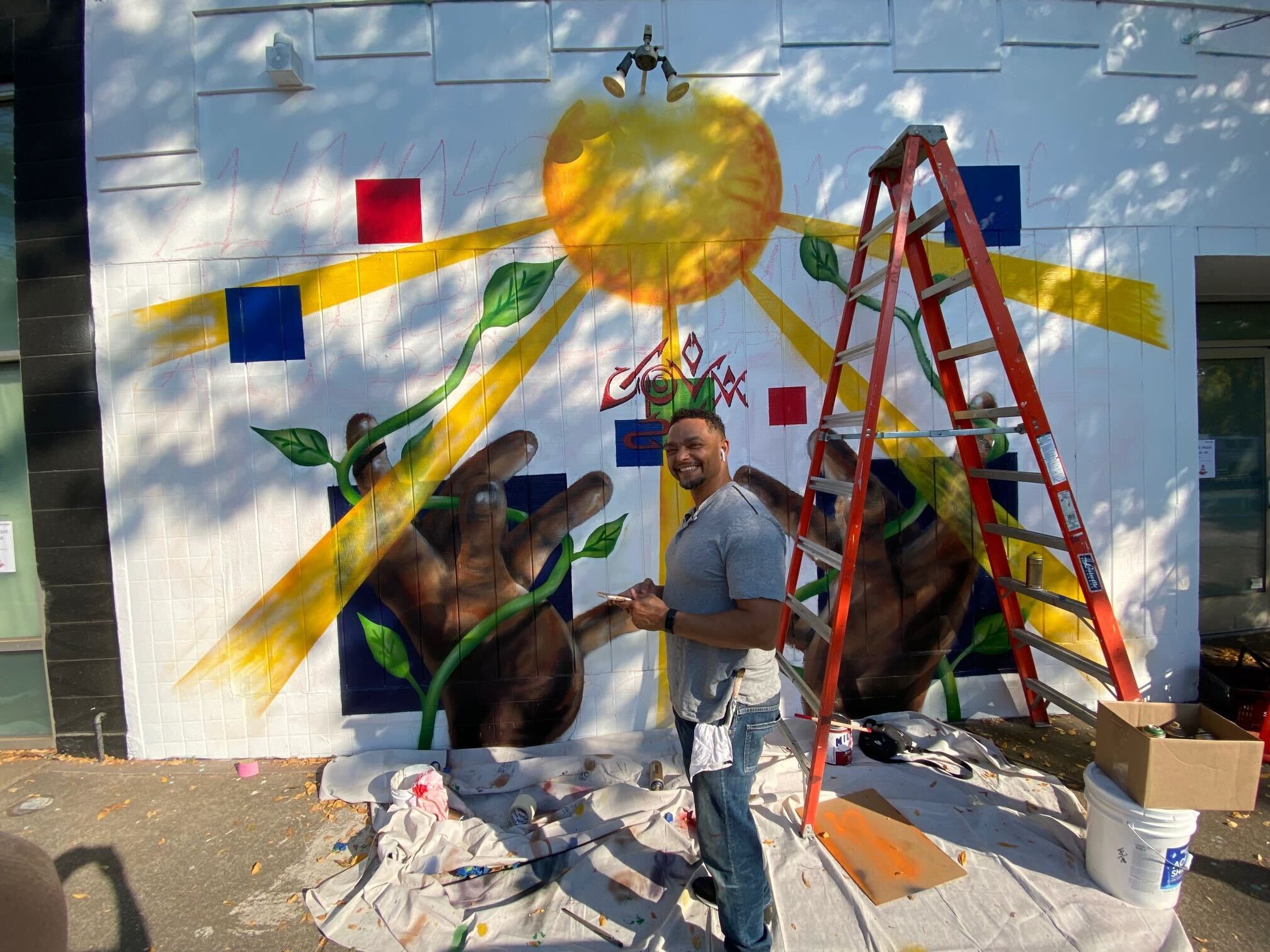
Photo | Jerome Sloan, Fresh Paint mural program, fall 2022

Illustration | Naomi Likayi

The City of Portland ensures meaningful access to City programs, services, and activities to comply with Civil Rights Title VI and ADA Title II laws and reasonably provides: translation, interpretation, modifications, accommodations, alternative formats, auxiliary aids and services. Request these services online or call 503-823-4000, Relay Service: 711.
503-823-4000 Traducción e Interpretación | Biên Dịch và Thông Dịch | 口笔译服务 | Устный и письменный перевод | Turjumaad iyo Fasiraad | Письмовий і усний переклад | Traducere și interpretariat | Chiaku me Awewen Kapas | अनुवादन तथा व्याख्या
Quick links
Let’s connect!
Copyright © 2024 OUR CREATIVE FUTURE | a regional framework to advance arts & cultural plan for all.
Portland metro region including Clackamas, Multnomah, and Washington Counties.
